IL-21: Proteins and Enzymes
IL-21 (Interleukin-21) is member of the family of cytokines that utilize the common gamma chain as a receptor subunit. This subunit is also a component of the receptors for IL-2, IL-4, IL-7, IL-9, and IL-15. IL-21 is produced by activated T follicular helper cells (Tfh), Th17 cells, and NKT cells. It exerts its biological effects through a heterodimeric receptor complex of the common gamma chain and the IL-21-specific IL-21 R. IL-21 supports Tfh cell development, immunoglobulin affinity maturation, plasma cell differentiation, B cell memory responses, and the migration of dendritic cells to draining lymph nodes. It costimulates the activation, proliferation, and survival of CD8+ T cells and NKT cells and promotes Th17 cell polarization. It blocks the generation of regulatory T cells and their suppressive effects on CD4+ T cells. In addition, IL-21 suppresses cutaneous hypersensitivity reactions by limiting allergen-specific IgE production and mast cell degranulation.
15 results for "IL-21 Proteins and Enzymes" in Products
15 results for "IL-21 Proteins and Enzymes" in Products
IL-21: Proteins and Enzymes
IL-21 (Interleukin-21) is member of the family of cytokines that utilize the common gamma chain as a receptor subunit. This subunit is also a component of the receptors for IL-2, IL-4, IL-7, IL-9, and IL-15. IL-21 is produced by activated T follicular helper cells (Tfh), Th17 cells, and NKT cells. It exerts its biological effects through a heterodimeric receptor complex of the common gamma chain and the IL-21-specific IL-21 R. IL-21 supports Tfh cell development, immunoglobulin affinity maturation, plasma cell differentiation, B cell memory responses, and the migration of dendritic cells to draining lymph nodes. It costimulates the activation, proliferation, and survival of CD8+ T cells and NKT cells and promotes Th17 cell polarization. It blocks the generation of regulatory T cells and their suppressive effects on CD4+ T cells. In addition, IL-21 suppresses cutaneous hypersensitivity reactions by limiting allergen-specific IgE production and mast cell degranulation.
Analyzed by SEC-MALS
| Source: | E. coli |
| Accession #: | Q9ES17.1 |
| Applications: | BA |
Animal-Free
| Source: | E. coli |
| Accession #: | Q9HBE4.3 |
| Applications: | BA |
| Source: | E. coli |
| Accession #: | Q9HBE4.3 |
| Applications: | BA |
| Source: | E. coli |
| Accession #: | Q9HBE4.3 |
| Applications: | BA |
| Source: | E. coli |
| Accession #: | Q9HBE4.3 |
| Applications: | BA |
| Source: | E. coli |
| Accession #: | XP_008266192.1 |
| Applications: | BA |
| Source: | HEK293 |
| Accession #: | Q9HBE4.3 |
| Applications: | BA |
| Source: | E. coli |
| Accession #: | NP_001003347 |
| Applications: | BA |
| Applications: | AC |
| Applications: | WB, ELISA |
| Applications: | Bioactivity, PAGE |
| Applications: | Bioactivity, PAGE |
| Applications: | Bioactivity, PAGE |


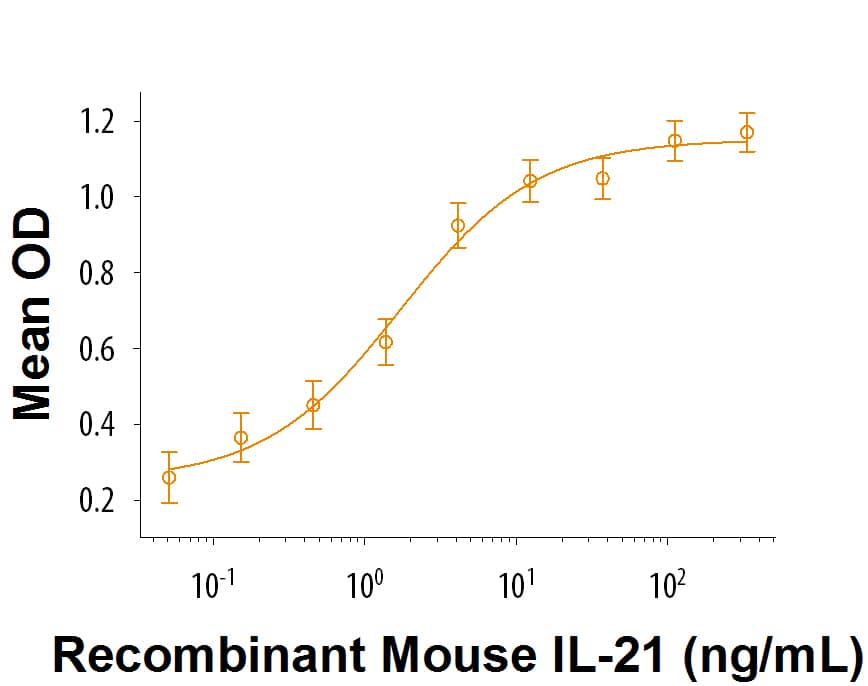
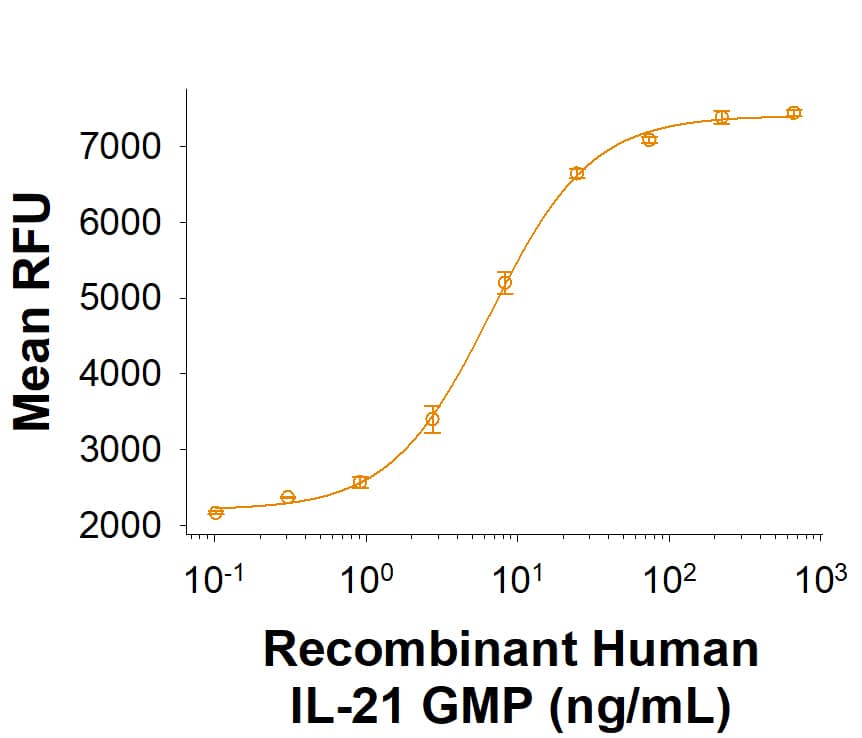

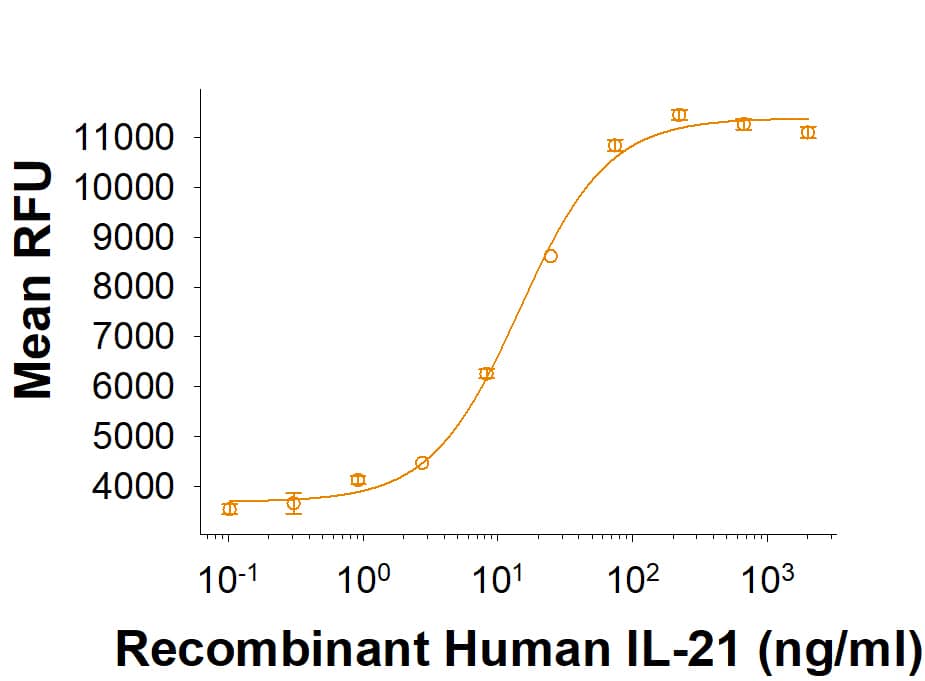

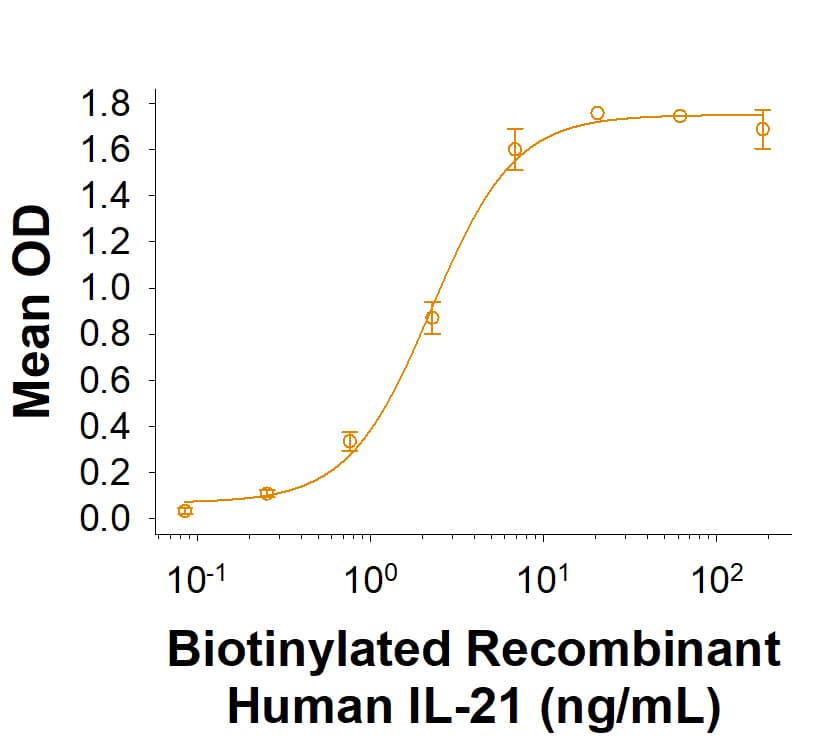

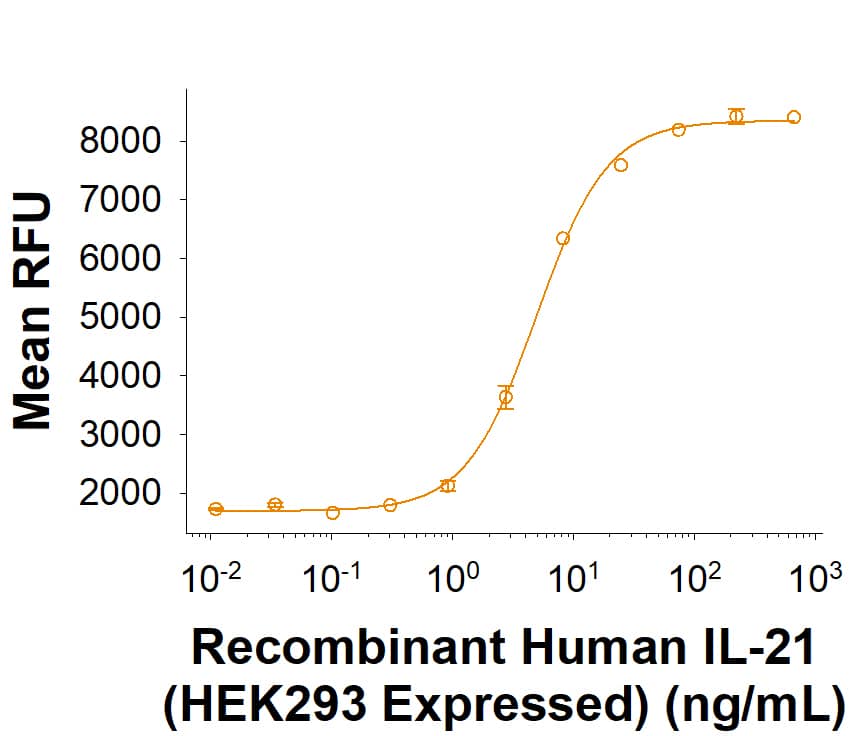

![Western Blot: IL-21 Antibody - BSA Free [NBP1-76740] - IL-21 Antibody Blocking Peptide](https://resources.bio-techne.com/images/products/nbp1-76740pep_il-21-antibody-blocking-peptide-2711202419251583.jpg)
![ELISA: Recombinant Bovine IL-21 Protein [NBP2-62453] - Recombinant Bovine IL-21 Protein ELISA: Recombinant Bovine IL-21 Protein [NBP2-62453] -](https://resources.bio-techne.com/images/products/nbp2-62453_recombinant-bovine-il-21-protein-231202523584734.jpg)
![SDS-PAGE: Recombinant Mouse IL-21 Protein [NBP2-35121] SDS-PAGE: Recombinant Mouse IL-21 Protein [NBP2-35121]](https://resources.bio-techne.com/images/products/Mouse-IL-21-Protein-SDS-Page-NBP2-35121-img0001.jpg)
![SDS-PAGE: Recombinant Rat IL-21 Protein [NBP2-35241] SDS-PAGE: Recombinant Rat IL-21 Protein [NBP2-35241]](https://resources.bio-techne.com/images/products/Rat-IL-21-Protein-SDS-Page-NBP2-35241-img0001.jpg)
![SDS-PAGE: Recombinant Human IL-21 Protein [NBP2-35057] SDS-PAGE: Recombinant Human IL-21 Protein [NBP2-35057]](https://resources.bio-techne.com/images/products/Human-IL-21-Protein-SDS-Page-NBP2-35057-img0001.jpg)